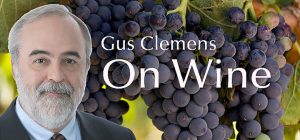The great wine label debate begins. Should wineries list ingredients on their labels?
Writing for wine-searcher.com, W. Blake Gray believes U.S. should follow a European trend toward listing ingredients on wine labels. “I care about what I put in my body,” Gray asserts.
So do I. But, as with so much, the devil lurks in details. What ingredients? Simple answer: 85-90% water and 10-15% alcohol. Maybe a tiny splash of sulfite. Done? Well, no.
Blake and others contend water would be listed only if added to the wine, not the water that exists naturally in wine. What about added sugar? Some winemakers add sugar, but that usually is converted into alcohol. What about yeast? With the common practice of filtration, there is no yeast in the bottle.
Ridge Winery, a fine maker, scrupulously lists ingredients. Ridge lists “indigenous yeasts and naturally occurring malolactic bacteria.” But Ridge filters, so the yeast and malolactic bacteria it lists are not in the wine. Ridge also lists “oak from barrel aging.” Oak barrels are a process, not an ingredient. Should Ridge be punished for false labeling?
Then there is dimethyldicarbonate, a microbial agent that kills yeast, bacteria, and mold. It is used in many drinks beyond wine—sport drinks, juices, teas. If you ingest it directly, it harms you. But if you leave it alone to kill yeast, bacteria, and mold, it breaks down into C02 and a trace of methanol in less than a day. How do you label that?
Add labyrinthine jurisdictions to this mess. Each state has its own rules, some require labels to be submitted and fees paid whenever they change. Every year, for every type of wine. A small winery killer.
Wine labels can only be approximations. Winemakers guess at the ABV because labels are printed before the wine is finished. Wineries can miss alcohol-by-volume by as much a 1.5% and still be in compliance.
Labels on the food we eat largely can be precise. Makers follow explicit recipes over and over again. Wine is the opposite. There can be differences bottle-to-bottle out of the same harvest and fermentation. When you drink wine, you drink a living, evolving thing.
This labeling push might look good to a bureaucracy looking to expand power, but not for wine.
Last round: Why is a man’s day off “his day off,” but a woman’s day off is “time to do laundry and house cleaning?” Open a bottle of wine and try to explain that to me.

